Edible Water Garden

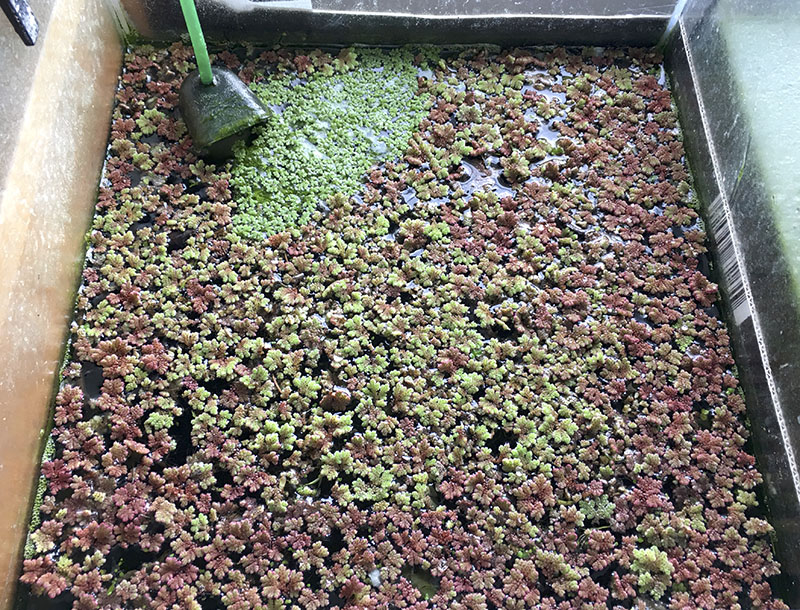

Our first aquarium cultures of three plants for the edible water garden project. Spring 2021.
Introduction
This project is an expansion of the Urine To Protein work.
We were often asked how to continue with it and whether we want to make a startup out of it.
Scaling up would be a possible way, but higher diversity is more interesting to us.
How can humans and plants be brought closer together to a more intimate relationship?
We add to duckweed two other plants that have similar characteristics. Azolla and the rough hornwort, both are fast growing, are edible, but not known or approved as food for humans.Rough hornwort should be to find in ponds, here in Switzerland. Azolla was imported from America, is considered as an invasive plant, but is also quite common in Europe. For example in Germany, Azolla is listed as an "established neophyte" by the Federal Agency for Nature Conservation.
Goals and questions of the project:
- All plants should be treated only with urine or self produced fertilizer with a minimal input of resources and energy.
- We want to cultivate all three plants together. But can they live together at all?
- What can we create with these three plants in culinary terms?
- Can we make a swamp salad out of it?
- How much oxygen is Azolla able to produce and how much Co2 can it absorb?
--> Many thanks for allowing us to use the Greenhouse at ETH Zurich for our experiment and the good cooperation!




At the end of 2021, we kept only one container in the outdoor space, filled with duckweed and a few azolla. In December they were even frozen and we thought the azollas would disappear.
Surprisingly the container was completely overgrown with azollas in the middle of 2022. The azollas took over the whole space and even displaced all duckweed. We do not know why and what was decisive that they suddenly thrived so well.
We could harvest large and beautifully green plants. For another attempt to cultivate azolla we put the crop in a small pond in our area. There was very little water because of the dry summer. The water surface was empty and there were no other floating plants living.
Can the plants spread here as well? Will they survive the winter and can they get native here?







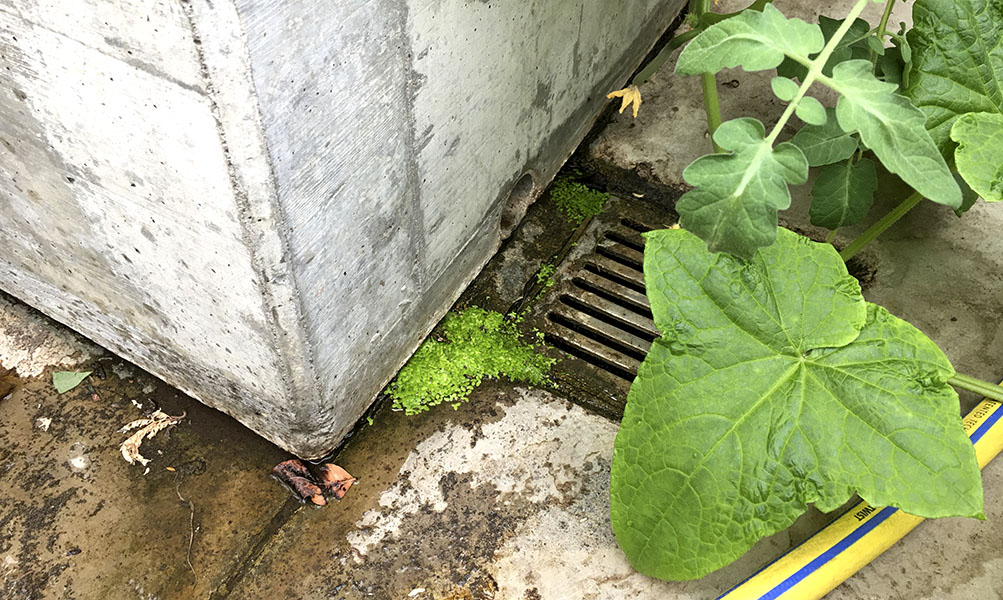

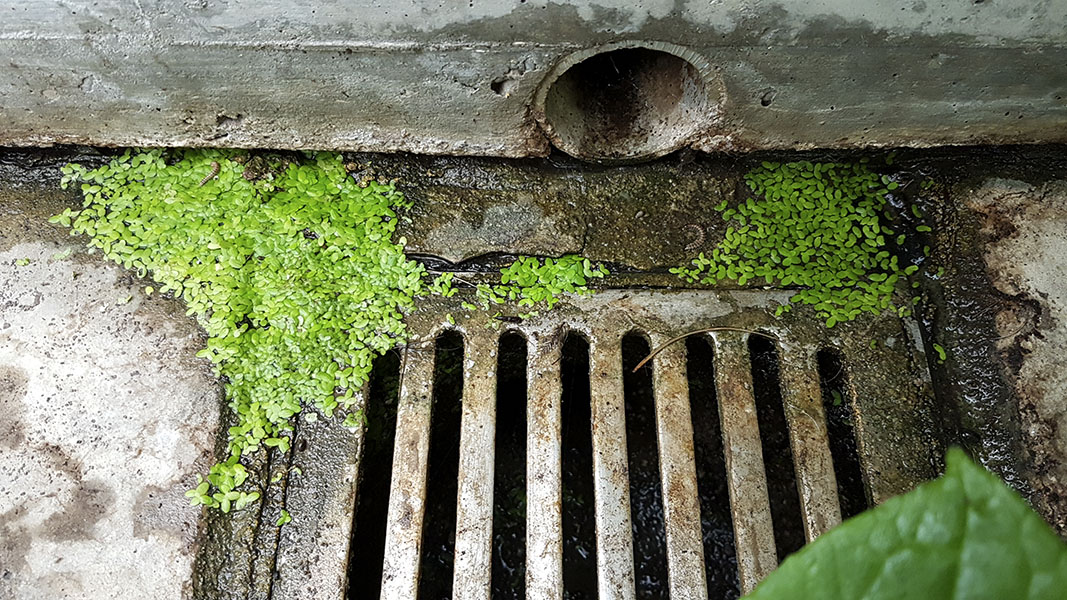
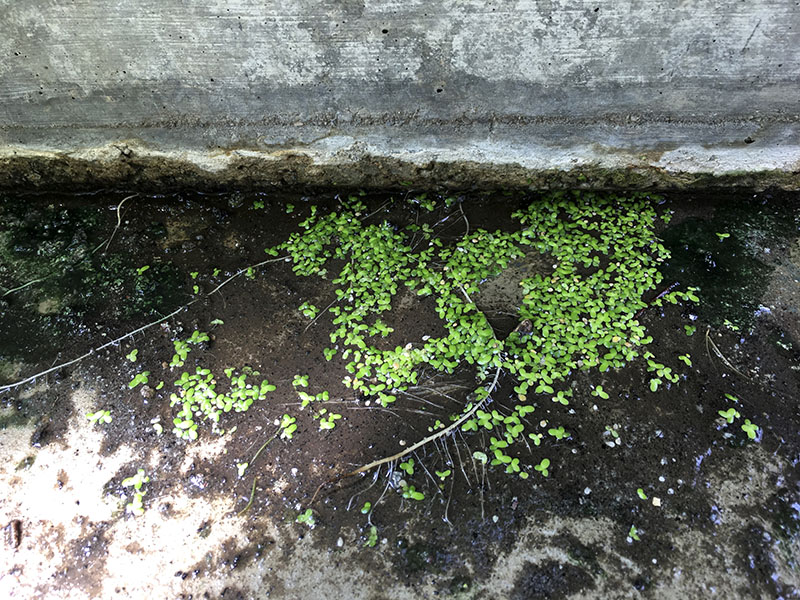
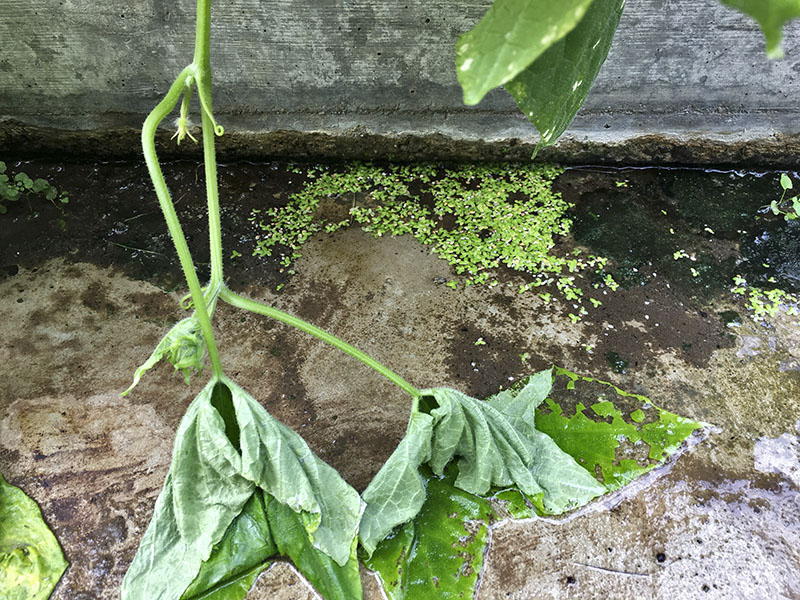
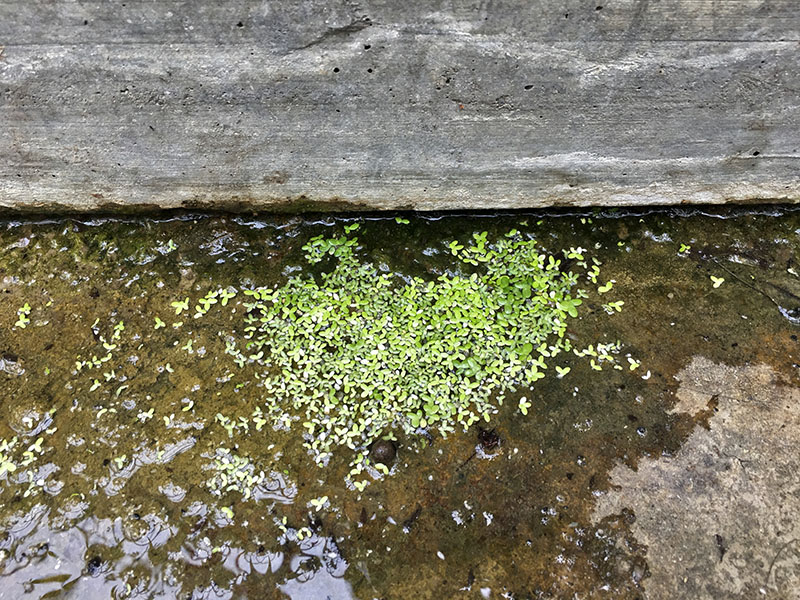
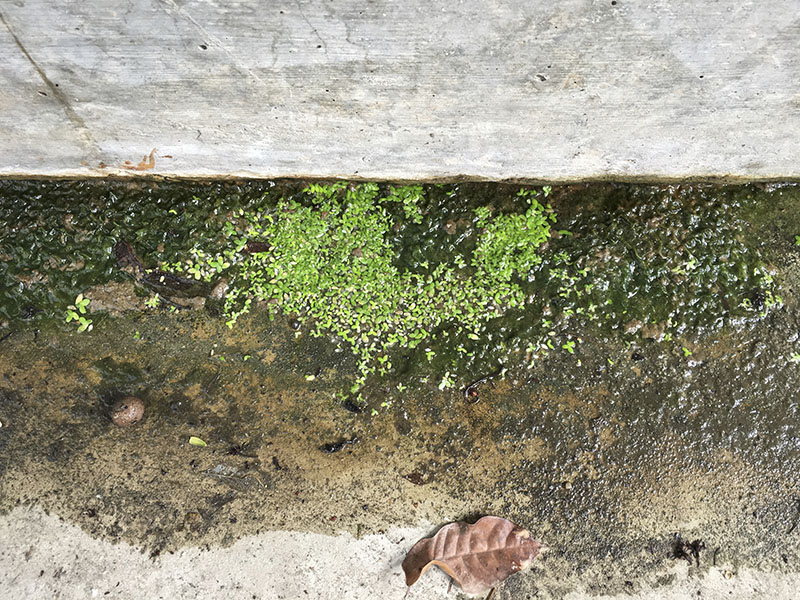
A large area, such as the one in the greenhouse (see further below), would have to be planted with more duckweed from the start to prevent algae growing at the same time.
There emerged fare too many green Filamentous algae and we transferred the duckweed to smaller tanks. Apparently, a few duckweed got into the drain in this process, where they surprisingly start to grow very well.
Yet again the plants grow in a place we have not even thought of. It seems to be always a bit humid at the drainage shafts of the greenhouse and the water probably quite nutrientrich.
Here, surprisingly they grow quite well.
We tried to put duckweed in various places. Slowly they even began to multiply.
Phosphorus Ferilizer experiment with Azolla
We have not yet managed to cultivate Azolla over a longer time period. At first they seem to multiply, but then they begin to get smaller and fewer, until finally hardly any one remain.
Various sources speak of the fact that Azolla need enough phosphorus, that
Phosphorus is a major growth limiting factor. Do our plants need more phosphorus?
To find out, we added in this experiment extra phosphorus to the plants.
In a second experiment, we use fallen leaves as fertilizer.
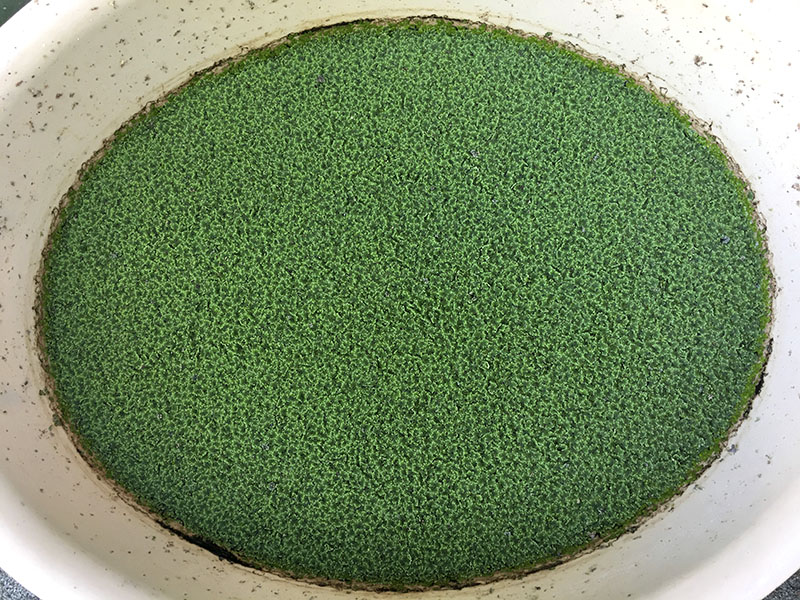
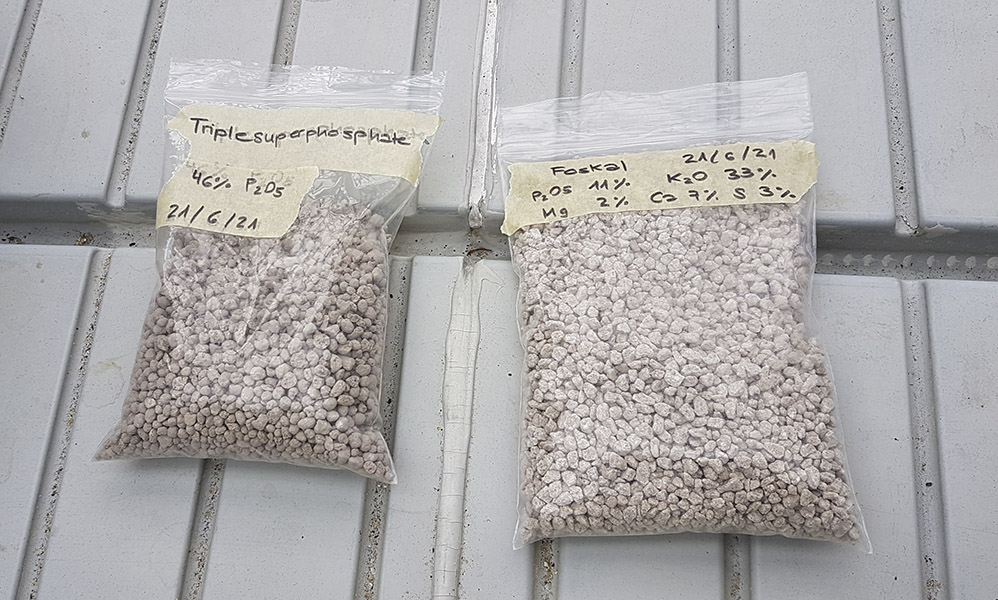

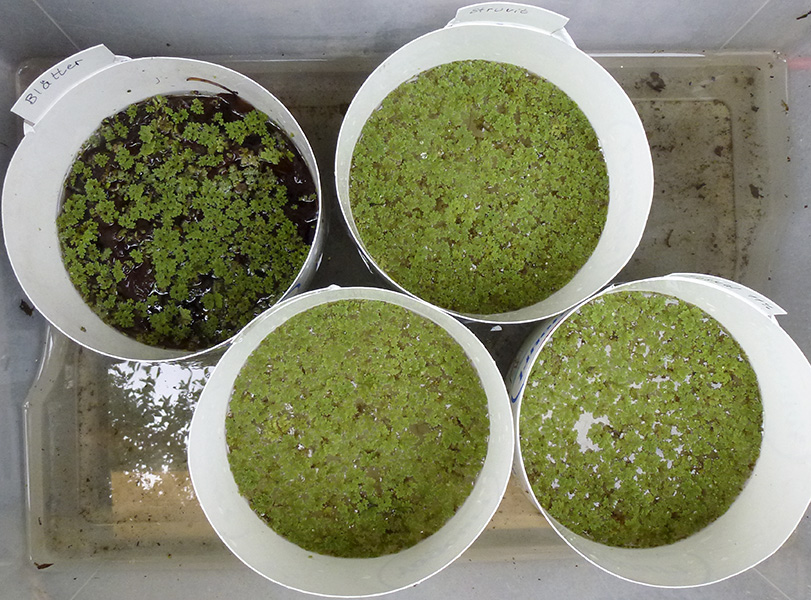
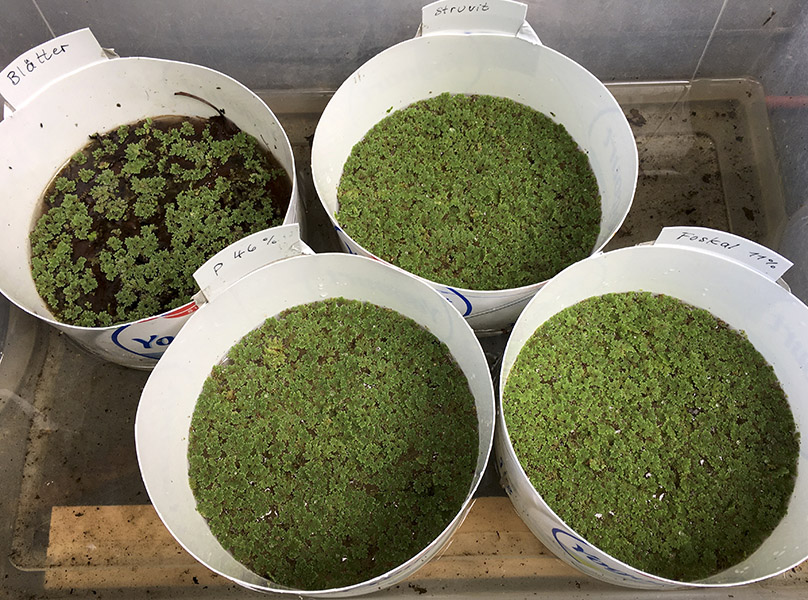
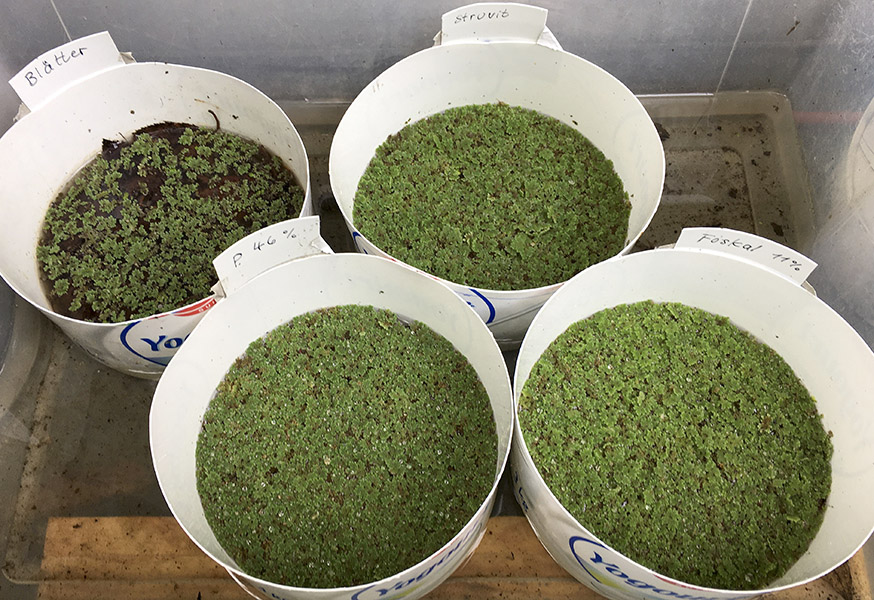
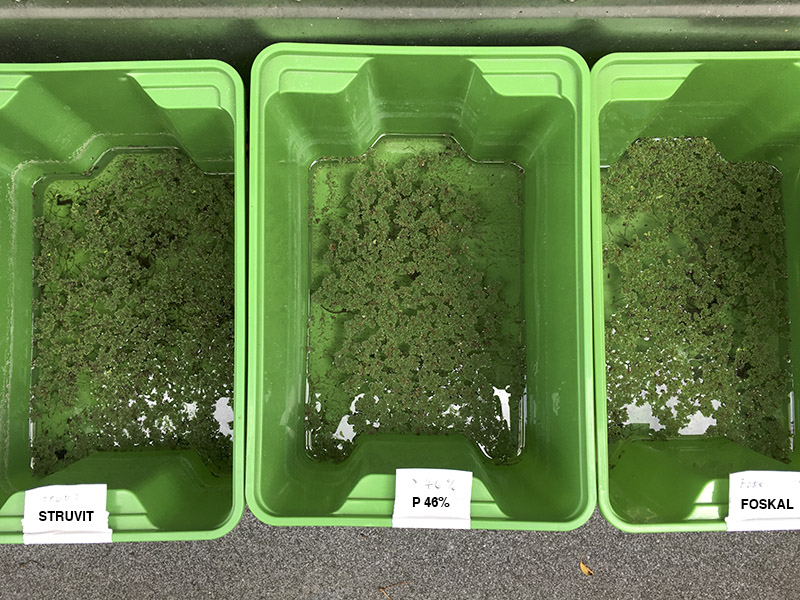
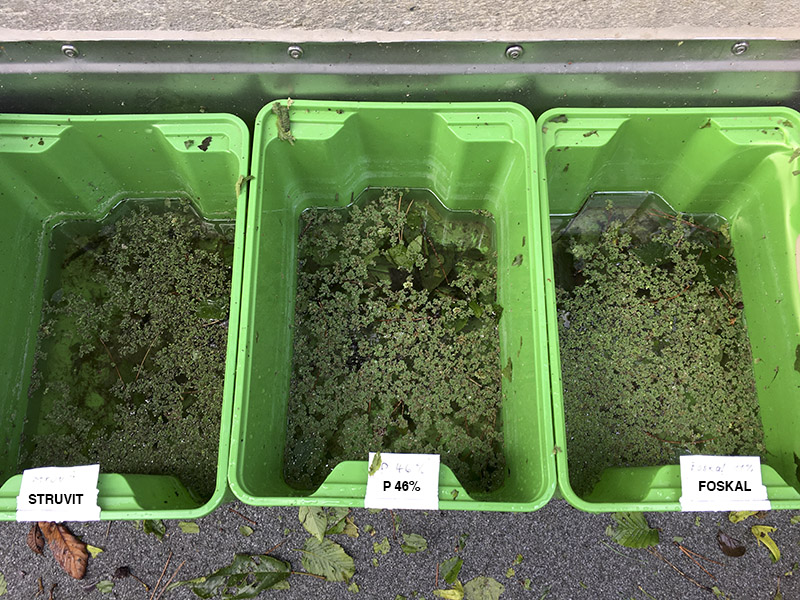

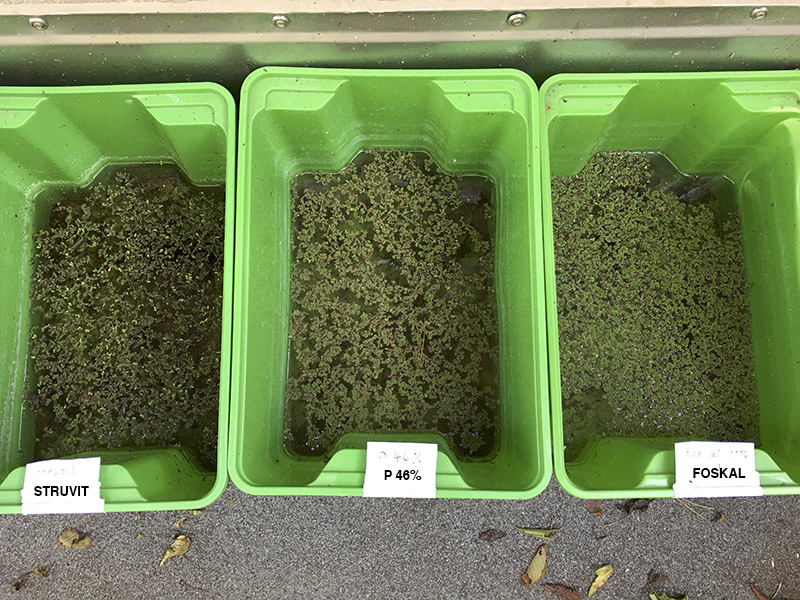
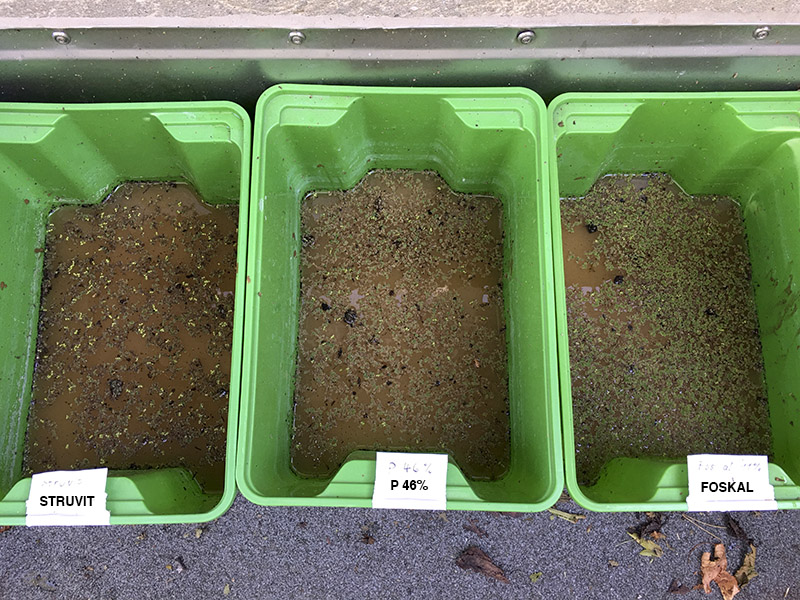
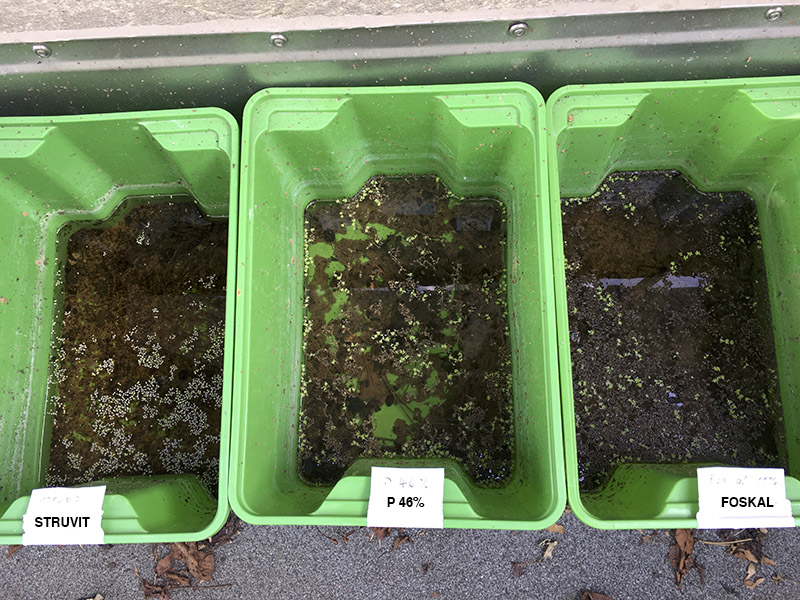
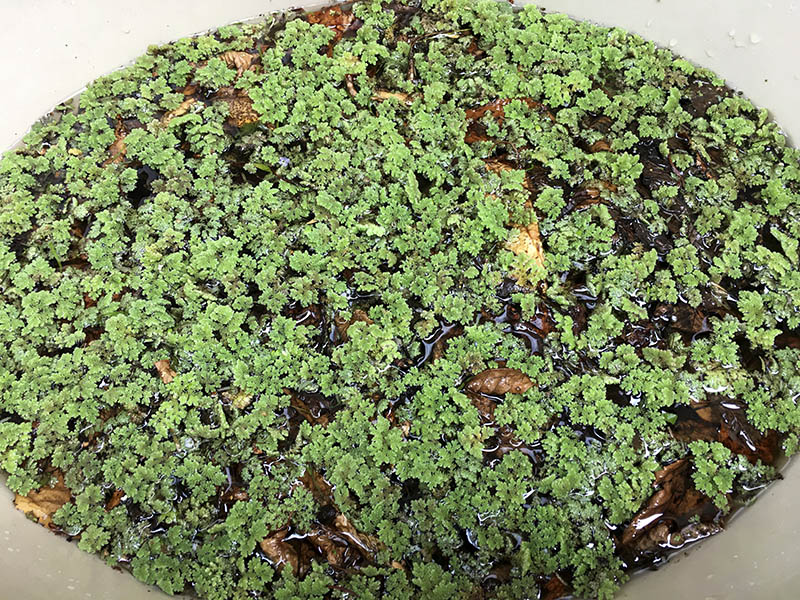

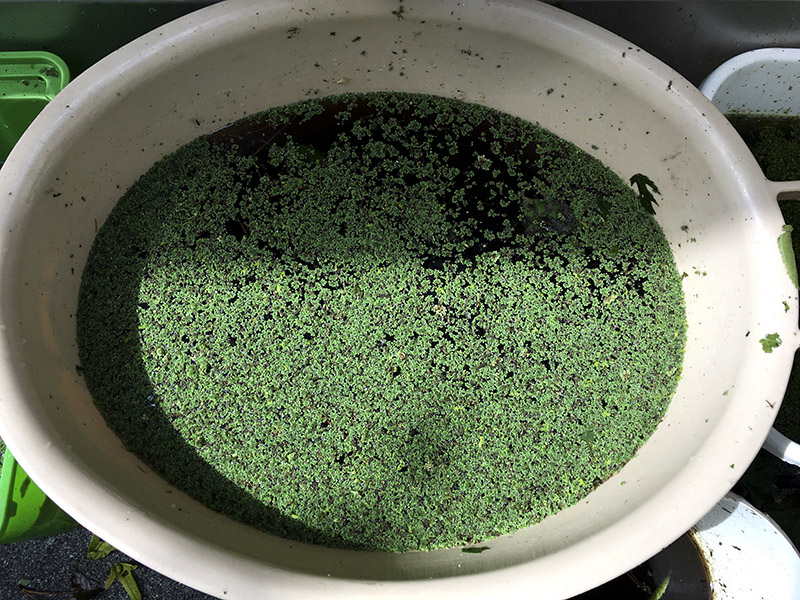

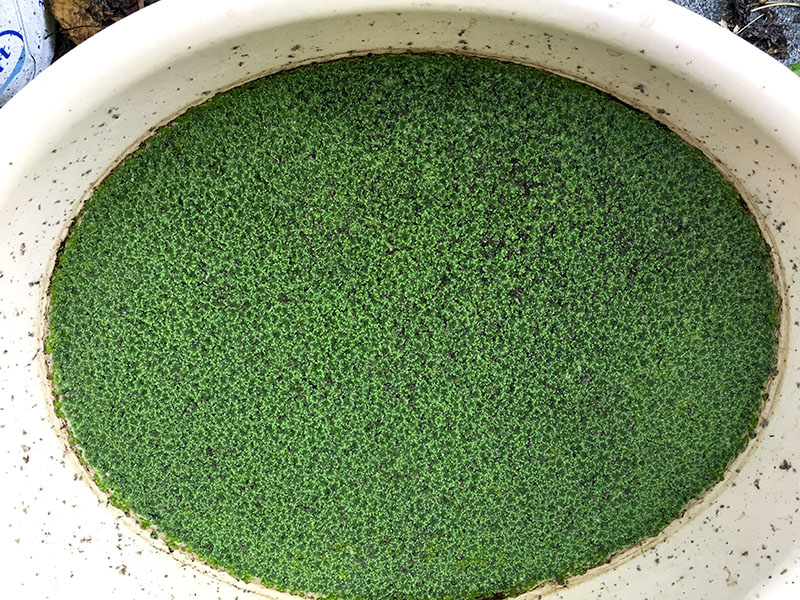

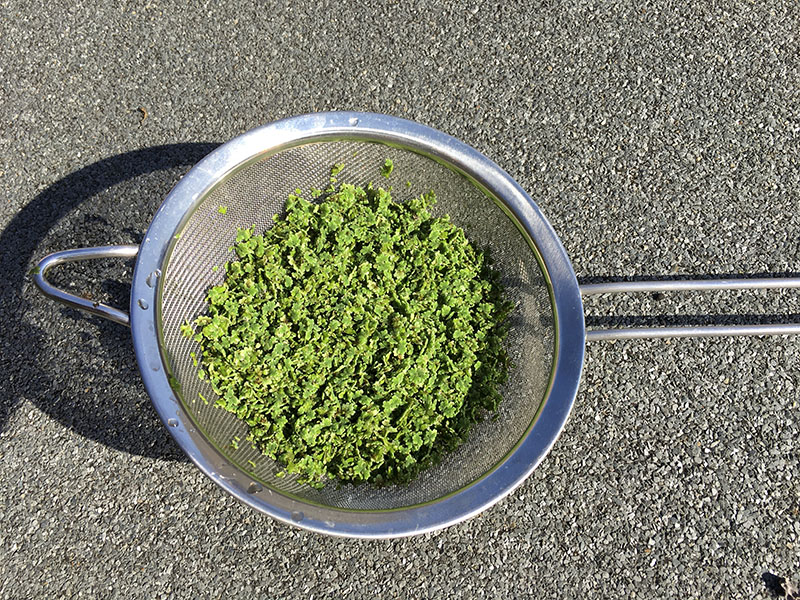



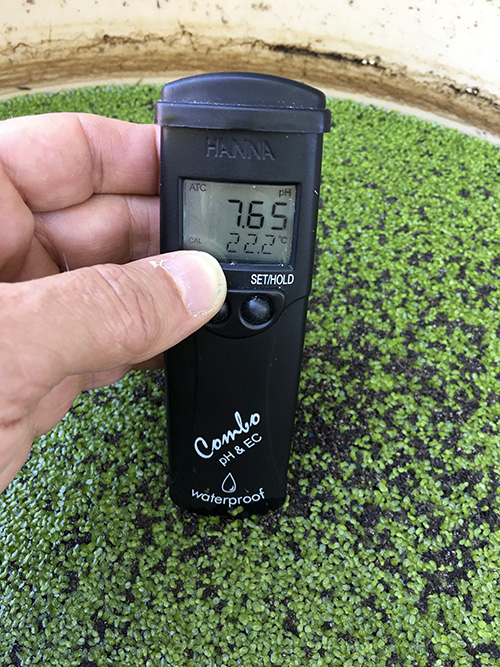
Greenhouse ETH Zürich spring 2021
The Greenhouse Art-Lab - Sustainable Agroecosystems --> Many thanks for the good cooperation and allowing us to use the Greenhaus for our experiment!


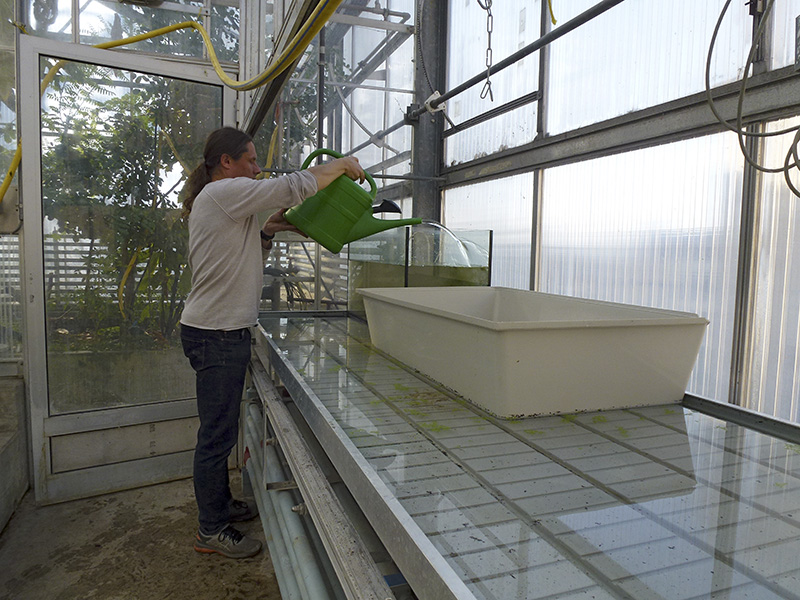
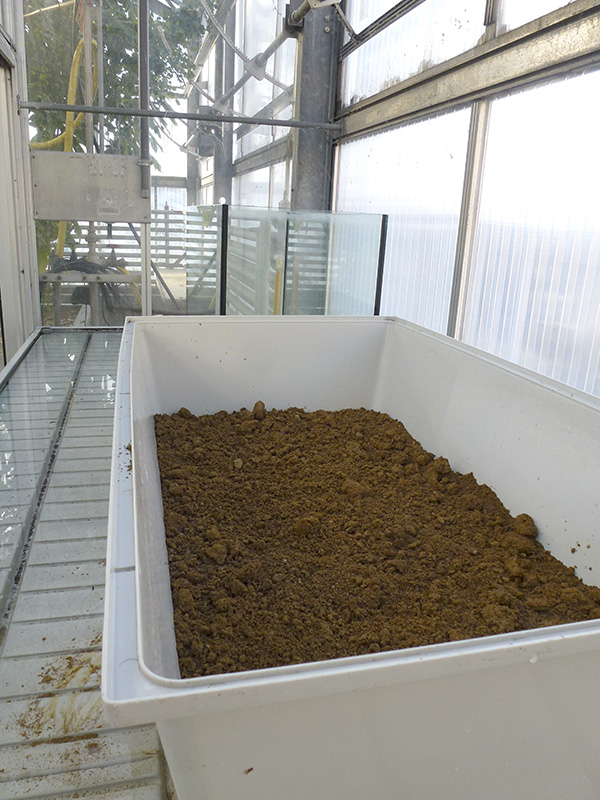
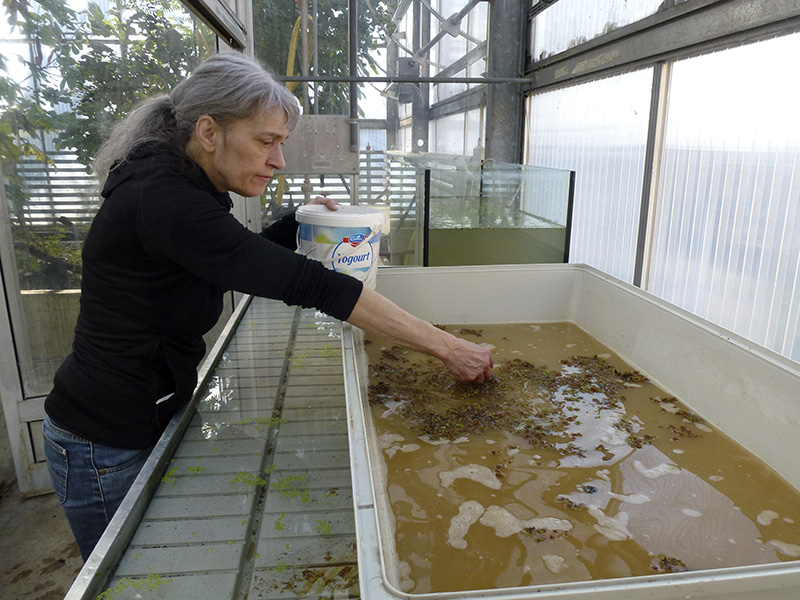
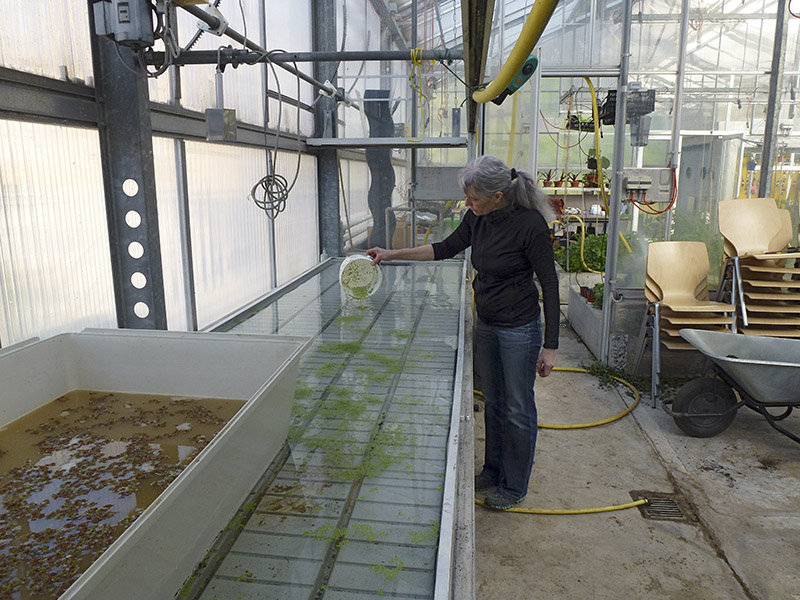





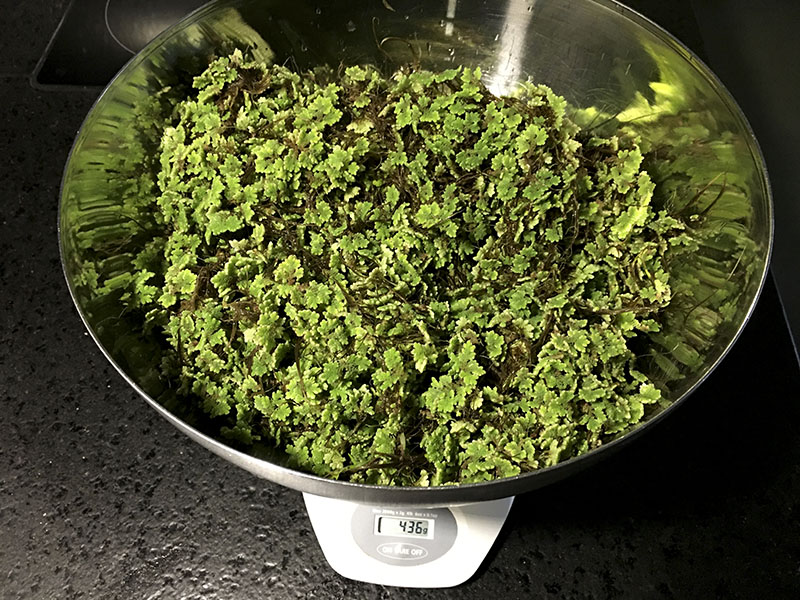
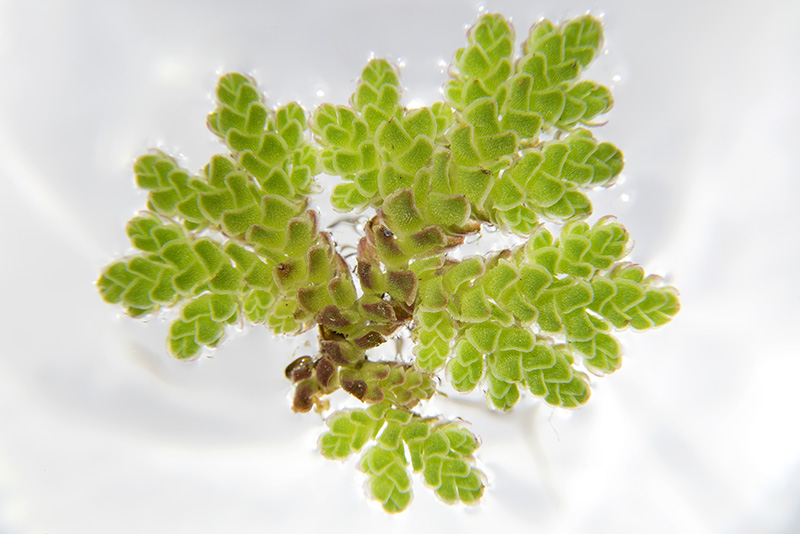
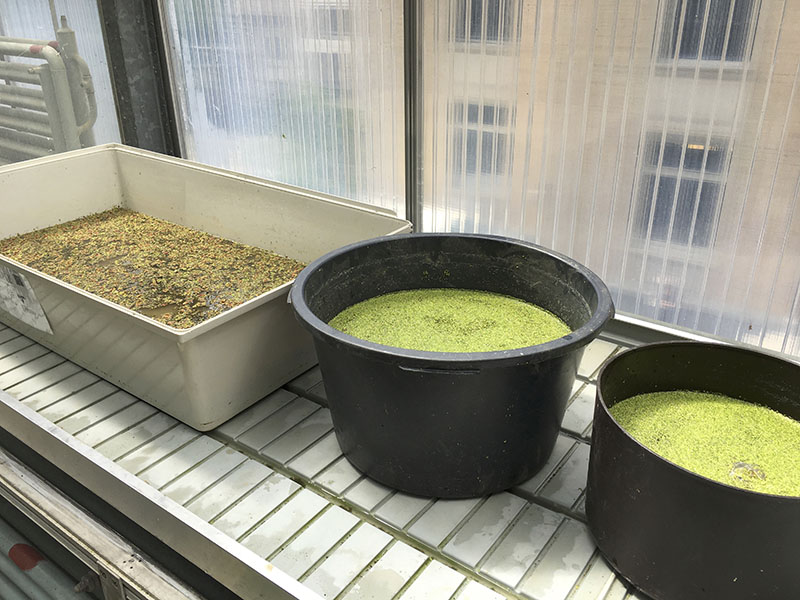
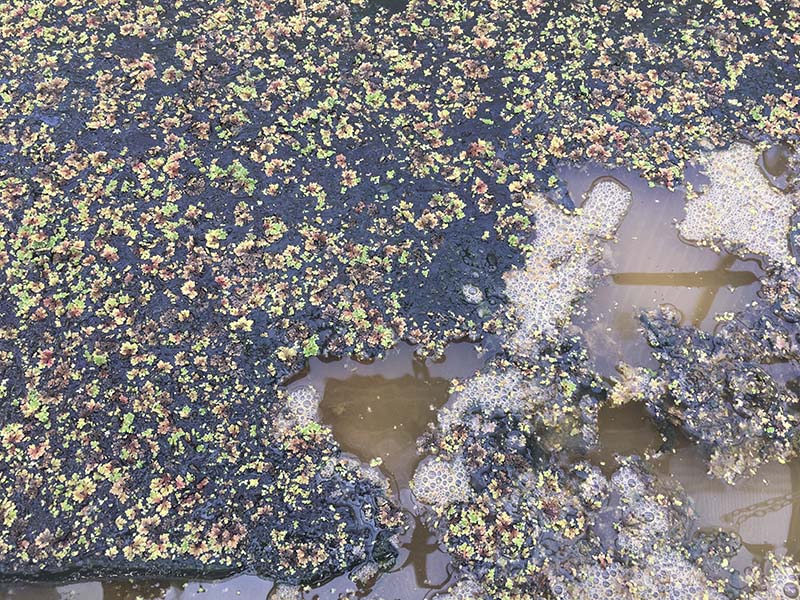
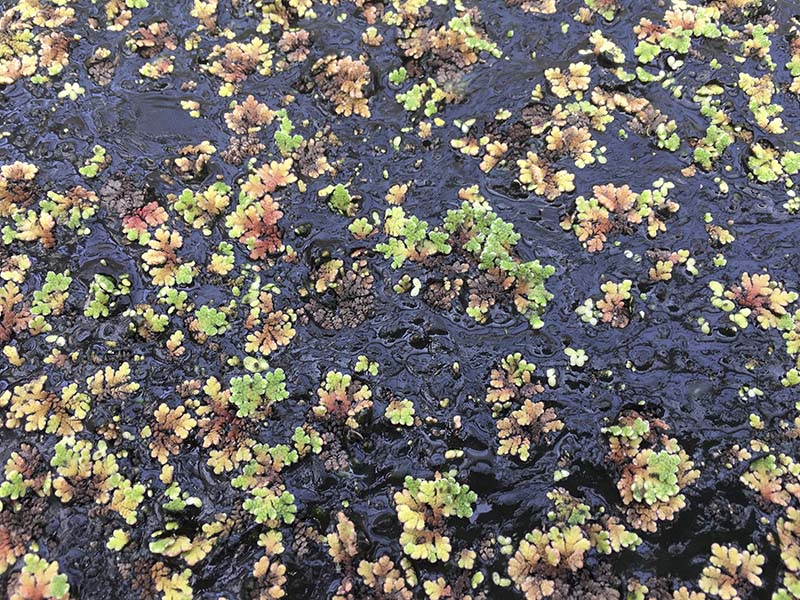
With duckweed we have already made some experiences, therefore in this first attempt the focus was mainly on Azolla.
In the beginning of our trial the Azolla did grow well. We fertilized with urine and our homemade ferment fertilizers. The water seemed to be rich in nutrients, which can also be seen in the algae that gradually took over the space.
Nevertheless, after a month the Azolla began to turn yellowish, indicating a lack of nutrients.
After two months especially Oscillatoria (cyanobacteria) algae did thriving well and the Azollas are dying.
Usually, if soil is in nutrient rich water, Oscillatoria (cyanobacteria) algae can very well develop.
Our own fertilizers seem not to have the right composition for Azolla. It is often mentioned in literature that phosphorus is the limiting factor for growth of Azolla.
In urine it has some phosphorus, up to 1.5g/l, but our used concentration is perhaps too little after all.
Use of the plants as human food?
Edible, but not known or approved as food for humans
In our Swiss cultural area, none of the three plants are known as human food.
We have specialized in a few selected plants that we grow on a large scale, with industrial cultivation methods. Many other edible plants we hardly know and are no longer considered. But what positive benefits could they have?
There would be so many more plants to grow and to eat. That would make our farming methods and diets more diverse.
Many edible plants are listed and described in the database Plants For A Future (PFAF) Edible, Medicinal and other uses of plants
It is important to know the plants and its ingredients, not only because of possible negative effects, but also to know how it could be used.
Regarding Azolla, are there some concerns for direct consumption by human?
- In the thesis by M. Karli
is mentioned: „Although not widely reported, there is potential to use Azolla for direct consumption by man.“ (S.30) And possibly in countries like for example India there might be more of a culture for using Azolla as human food.
- Looking at the nutritional values of Azolla, there is striking that 20 - 30% of Azolla's dry weight is protein, which is very much for a vegetable.
It is also a source of minerals, vitamins and carotenoids.
- A group of Japanese and Chinese scientists evaluated possible diets for Mars colonies
and Azolla was considered as one of the possible plants for it. If a plant is explored as food for space travel, the plant needs healthy and special properties.
Therefore, why not using this plant as food on earth?
- For Azolla filiculoides no hazards are known. See here in the PFAF database
There are other Azolla species that are perhaps under-researched and therefore caution is advised. The following reservations are described for
Azolla pinnata:
"Although we have found no reports of toxicity for this species, a number of ferns contain carcinogens so some caution is advisable. Many ferns also contain thiaminase, an enzyme that robs the body of its vitamin B complex.
In small quantities this enzyme will do no harm to people eating an adequate diet that is rich in vitamin B, though large quantities can cause severe health problems.
The enzyme is destroyed by heat or thorough drying, so cooking the plant will remove the thiaminase."
- In the Book The Azolla Cooking and Cultivation Project
from the artist Erik Sjödin are concerns raised (S34) about the cyanobacteria living in symbiosis with Azolla and that some ferns are known to contain carcinogens.
But he also mentions : „However, it is unclear if this applies to Azolla.“
For Ceratophyllum demersum, here the edibility Rating of PFAF (Plants For A Future)
- As with duckweed, tests in zero gravity in space have been undertaken with Ceratophyllum demersum to be considered as a plant for bioregenerative systems.
„It was shown on the SLS-89 and SLS-90 space shuttle missions with the C.E.B.A.S.-MINI MODULE that the edible non gravitropic rootless higher aquatic plant Ceratophyllum demeresum exhibits an undisturbed high biomass production rate in space…“
(see: Aquatic food production modules in bioregenerative life support systems based on higher plants)
- In the book Eßbare und giftige Wildpflanzen in Mitteleuropa from Wolfram Loch plants are divided into poisonous and non-toxic, edible plants. Ceratophyllum demersum is listed as non-toxic.
For Duckweed species: See here the edibility ratings of PFAF (Plants For A Future)
- Lemna gibba
- Lemna minor
- Lemna trisulca
- Spirodela polyrrhiza
- Wolffia arrhiza
Plant sites in nature
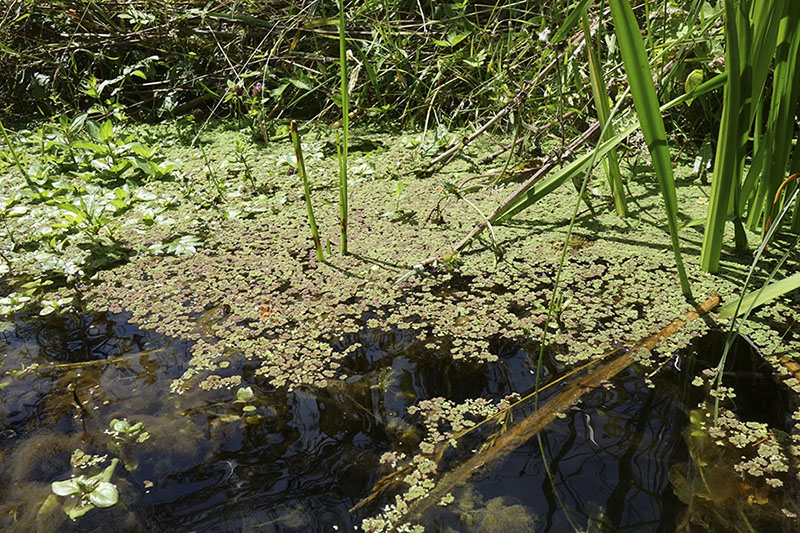


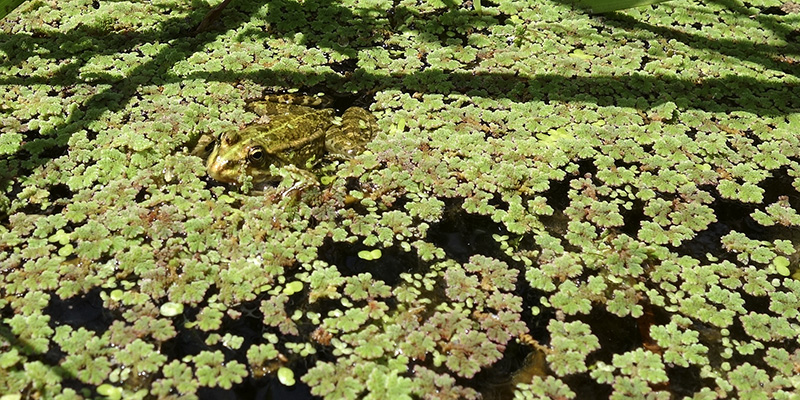
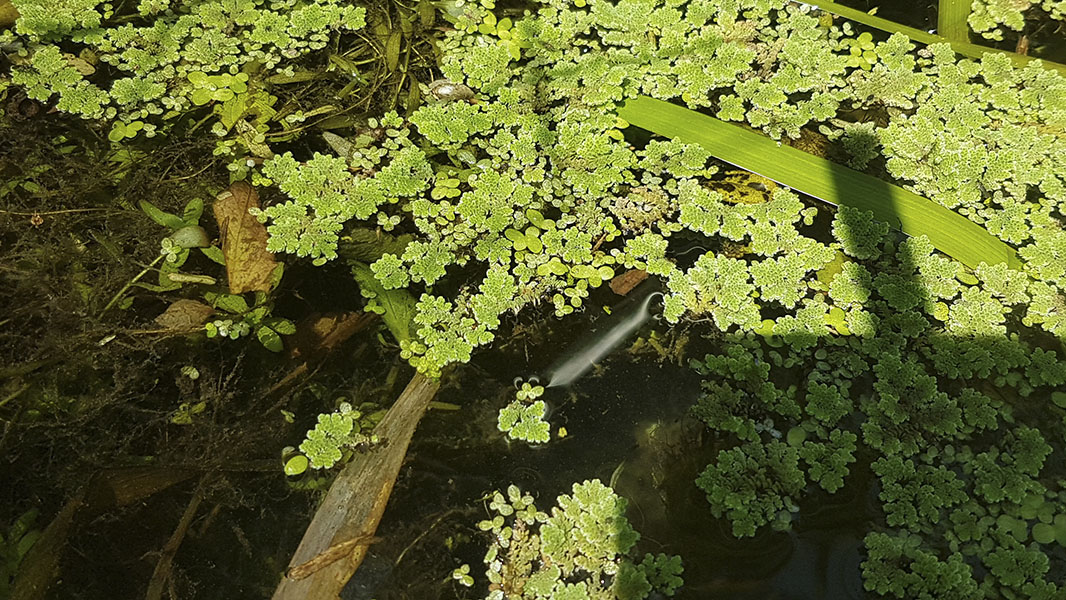
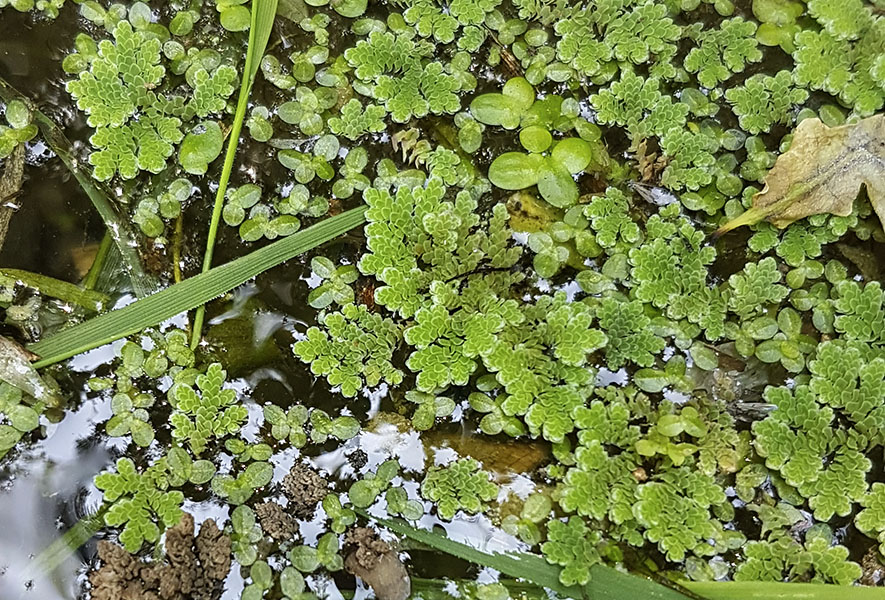
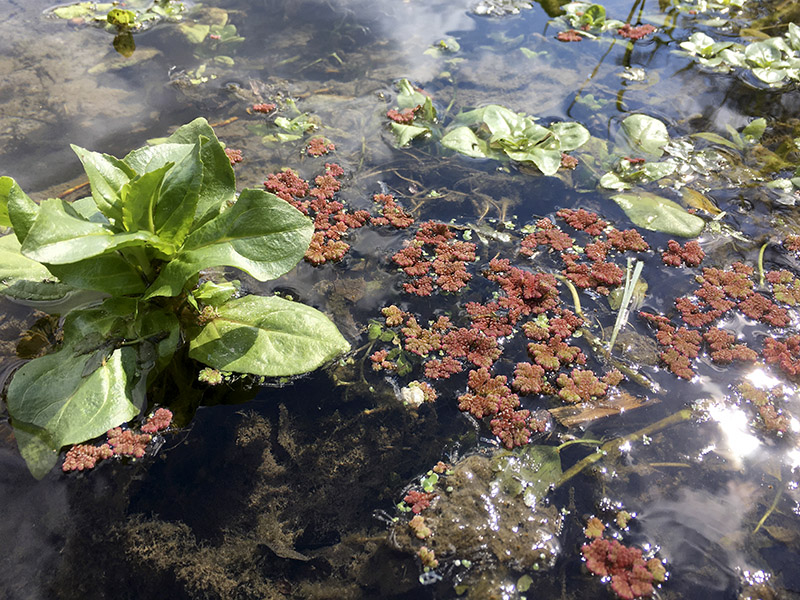
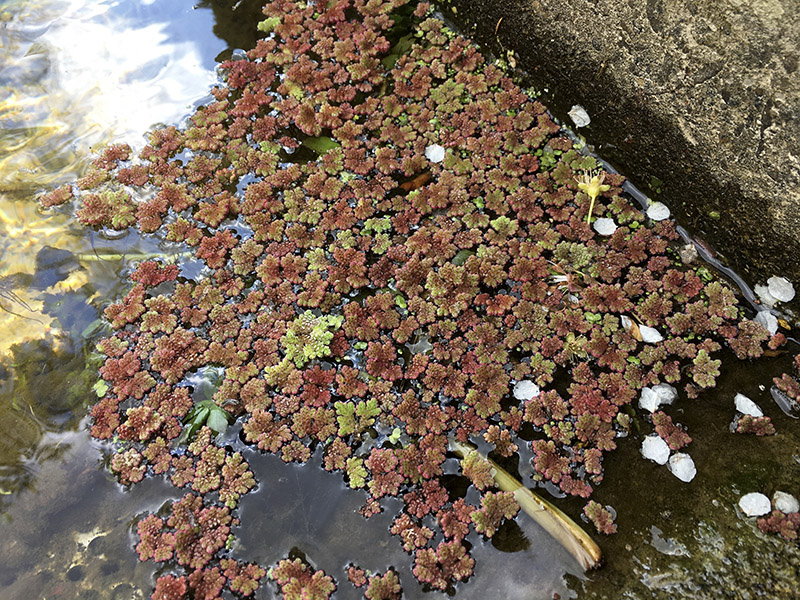

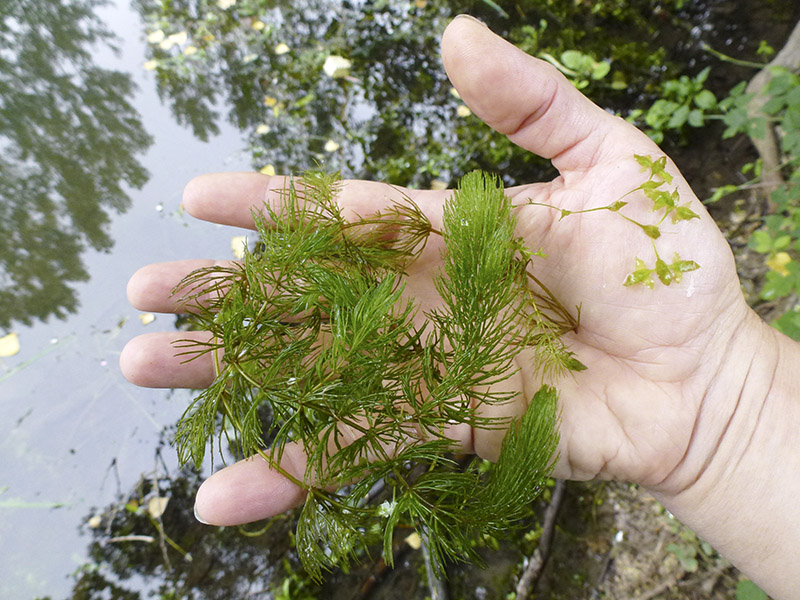
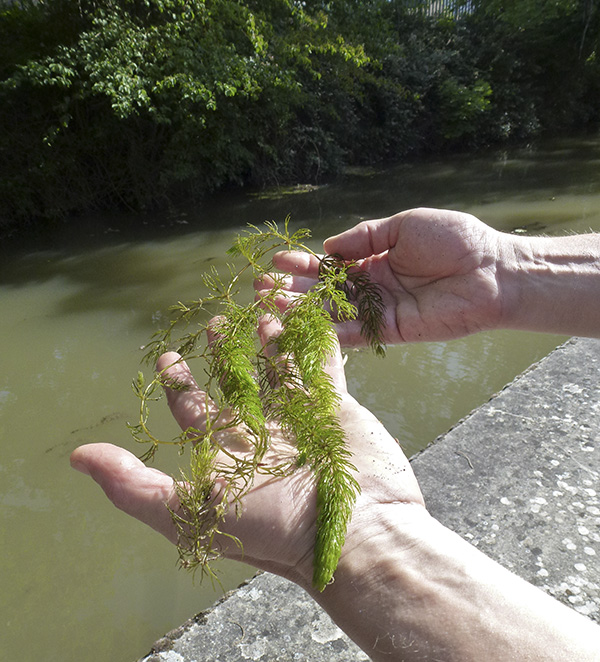
Art / Design using Azolla or Hornwort
